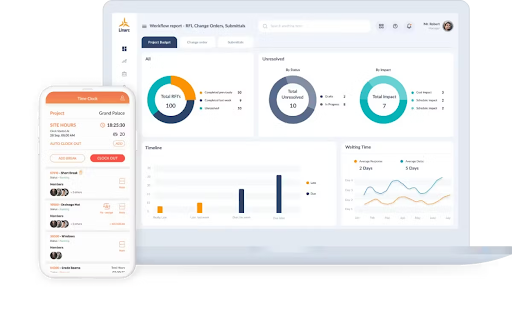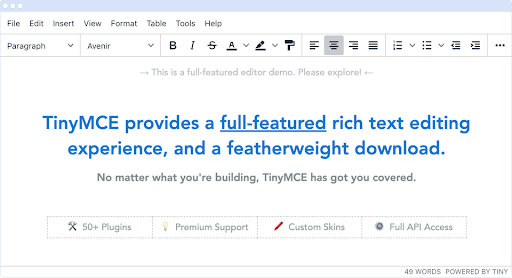Image credits: Pexels
Artificial intelligence (AI) technology has impacted many global industries, but project management has practically been redefined. Capable of rapidly automating tasks, analyzing data, and driving collaboration, AI’s influence in project management is evident. With new AI solutions being developed daily, these tools are changing how teams get work done in the first place.
Creating Visibility for Smarter Strategies

Credit: Local Falcon
Businesses have long relied on search engine optimization (SEO) strategies to create visibility, but the rise of AI is changing how users receive information. AI search result tracking is now as essential as, if not more important than, SEO. Today, businesses must understand how visible they are on traditional search engines and AI platforms like ChatGPT, Gemini, and Google AI.
Companies like Local Falcon, a geo-grid SEO visibility tool, are expanding their solutions to account for AI search result tracking.
As the company’s CEO, David Hunter, explained, “AI search results are still inconsistent, but they’re becoming too important to ignore; especially for local visibility.”
Local visibility in AI search is still unpredictable, but this is exactly why measurement matters. Hunter explains, “most searches have local intent, and the AI environment doesn’t perform as well as Google Maps yet,” which makes it critical for businesses to track both.
By combining traditional SEO metrics with AI-specific reporting, Local Falcon helps owners spot gaps that could drain budgets or misdirect campaigns. Hunter added that many people assume AI search will replace traditional methods overnight, but the fundamentals remain. “A lot of the same methodologies you needed for traditional SEO and local SEO still absolutely apply here,” he said. “You can’t skimp on that. It still makes a big difference.”
Applications of Field-First AI

Credit: Linarc
While most AI tools are focused on online applications, some are designed for real-time use in the field. Platforms like Linarc are purpose-built for construction, offering predictive scheduling and unified communication features. Others use AI tools to help teams adjust quickly when faced with material delays, shifting costs, and reports from the field.
“Our predictive engine calculates the impact of every change,” Shanthi Rajan, founder and CEO of Linarc, shared, “so you’re not constantly reacting; you’re planning with foresight.”
In many ways, field-first AI demonstrates that this technology can create solutions outside of online spaces. Real-time data has applications in almost every industry, and areas like construction are no exception.
Rajan stressed that Linarc was never designed to be just another scheduling tool. It was built as a single source of truth for both office and field teams. “If your data is split across emails, texts, and Slack, you lose control,” she said, noting how fragmented communication often derails projects.
With Linarc, expenses, predictive analytics, and daily updates flow through one platform, giving managers a complete picture in real time. Its mobile-first design also ensures broad adoption on construction sites. “Even the smallest contractors today want technology on their side,” Rajan added. “We designed the mobile app so that crews can track progress, sign off, and even generate invoices right from the site.”
Content Collaboration at Scale

Credit: TinyMCE
Small businesses and major corporations depend on their online presence for success, and AI tools have begun to power cloud tools. Compliance-heavy industries seek flexible application programming interfaces (APIs) offered by hybrid cloud setups to repurpose and realign internal resources and optimize developer productivity.
One platform, TinyMCE, powers 13% of global web content with AI tools.
“We’re creating ‘Moneyball for developers,’” Michael Hideo, vice president at TinyMCE, stated, “using AI to compose the best team for each project.”
For Hideo, the true value of TinyMCE lies in preserving and reviving institutional memory. Organizations generate thousands of pages of documentation, intranet posts, and technical notes, and AI now makes it possible to reuse content that might otherwise disappear into the archives. “TinyMCE is like plumbing. It’s invisible, but essential,” Hideo said. “Our role is to make sure content flows securely and efficiently at every scale.”
That efficiency also depends on secure infrastructure, and Hideo believes the future lies in flexible architectures. “Hybrid cloud is where the world is going,” he explained. “By designing TinyMCE as APIs, we let developers scale globally while still protecting sensitive data locally.”
Reimagining Meetings With Digital Coworkers

Credit: Arthur Technologies
One of the most popular applications of AI in project management is the so-called “digital coworker,” which is intended to support human team members. An effective digital coworker can handle various tasks or facilitate the next steps for human team members to progress a strategy. Using tools such as these, companies can maximize their team’s effectiveness.
Organizations like Arthur Technologies provide businesses access to two distinct AI-powered platforms, one in virtual reality (VR) and one web-based solution. Both act as digital team members, capable of facilitating interviews, synthesizing group feedback, and proposing next steps.
“AI isn’t just a tool anymore,” Christoph Fleischmann, founder of Arthur Technologies, explained. It’s a team member with perspective, memory, and insight.”
Fleischmann emphasized that Arthur’s digital coworkers are not meant to replace human input but to expand it. The system can interview participants in parallel, surface overlooked risks, and generate unbiased agendas, creating what he calls an “aperture of discussion.”
“We always thought the most powerful AI applications behave like team members, not tools,” Fleischmann said, describing how the technology helps teams avoid bias and groupthink.
For complex projects that stretch across geographies, he argued that immersive collaboration can even outperform traditional meetings. “If you’re dealing with complex topics across geographies, immersive collaboration outperforms traditional platforms,” he explained. “It puts everyone in the same room, without the flights and the compromises.”
Transforming Project Management in 2025
Whether a company needs to improve its ranking in AI search results or to manage construction timelines better, AI tools provide a solution. Businesses find new opportunities to succeed as the best platforms push their solutions beyond automation, aiming to augment human strengths and bolster collaboration.
AI technology is developing rapidly, and project management tools benefit from its growth. Whether a business is unsure about adopting an AI solution or has already integrated several tools into its operations, continued improvement solidifies this technology’s place in global industries.


